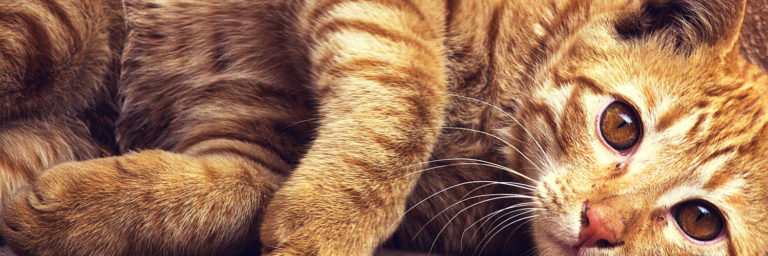Mange in Cats: Types, Symptoms and Diagnosis of Cat Mange
Typically a condition common among dogs, mange in cats is rarely diagnosed. A form of inflammatory skin disease in cats, mange is caused by different species of mites. Mange is a term used to describe different skin conditions in cats caused by different types of mites. If your furry friend is miserably itchy or has severe dandruff, or has missing patches of fur, it might be a case of mite infestation.
While some mites normally reside on a cat’s skin and hair follicles, many others are outsiders and possibly parasites. As kitten develops into a grown-up cat, their immune system keeps the mite population in check. Unfortunately, some factors, such as poor hygiene, weakness, illness, age, and malnutrition, can disturb the balance and an infestation begins. The mite can reproduce quickly in such conditions, resulting in an infestation.
Types of Mange in Cats
Cat mange is a parasite infestation, which can cause intense irritation and itchiness, especially in the kitty’s ears. Any itchy cat doesn’t feel good, nor can they sleep or eat well. Often mange in cats can cause excessive itchiness that can make them downright grouchy. Itchy cats can scratch and bite themselves so badly that they develop infected sores.
There are different conditions of mange in cats:
- Demodectic mange in cats is the most common mite infestation. Caused by different types of mite, the condition can affect the skin and hair follicles and may cause severe hair loss in cats, if left untreated. Besides, in severely afflicted cats, the infection could result in scales and lesions on the skin, resulting from excessive itching, scratching, and biting.
- Feline sarcoptic mange is one of the rarest yet most contagious and nastiest forms of mite infestation in cats. The condition is caused by microscopic, light-colored, and oval mites referred to as “Notoedres cati.” It is also referred to as feline scabies. When the mites spread to the head and neck, the most common symptoms appear in the form of lesions and hair loss all over the body so much so that the kitty’s body may appear scaly and crusty. A highly contagious condition, the mite infestation spreads quickly as self-grooming by the cat during the infestation. It transports mites to different parts, including feet, legs, and abdomen.
- Notoedric mange is similar to sarcoptic mange in dogs and referred to as feline scabies. Severe skin infections on the face and ears are common in the cats with the disease. The highly contagious yet rare form of skin infection in cats may gradually spread to the rest of the body. The condition may affect cats and kittens of any age.
Symptoms of Mange in Cats
Skin lesions may appear on the ear margins. The lesions are the result of intense irritation and itching and may spread rapidly from the ear to the face and the neck. In some severely affected cats, lesions may be found on the cat’s feet and between their legs. The cat’s skin may become thickened and wrinkled. The mange symptoms in cats are considered to be caused by an allergy to the mite itself.
Mite infestation can cause intense itching in cats, making the feline to scratch relentlessly. Too much scratching could cause bald patches and a moth-eaten appearance. If you come in contact with an infected cat, it can cause a skin rash or red bumps, which may appear like a mosquito bite. The condition is uncomfortable for humans, though the mite cannot infest the human body or complete their life cycle that started on the original host – the cat.
Unless you address the mange in cats in time, the itchiness may intensify and eventually spread throughout the kitty’s body. Not only this, their hair may become matted. Her paws, forelegs, and lower abdomen may have crusted sores.
Diagnosis of Mange in Cats
Your veterinarian will perform a thorough medical exam to look for signs of mange in cats. He may take skin scrapings of the affected site. The vet may suggest some other medical tests specific to your pet’s symptoms to check for signs of the severity of the infestation.
The treatment for mange depends on the level of infestation and severity of mange symptoms in cats. Your vet may suggest specialized shampoos, regular cleaning and vacuuming of bedding, and topical preventive medication to treat fleas and heartworm. For severe cases of infection, the vet may prescribe additional medications, including antibiotics.
The best preventive for mange in cats is to secure your feline from animals suffering from mite infestation. Mites survive only on their host and cannot survive in outside environment. Keep your cat clean but avoid drying the skin. This will help keep the mite population in check. Avoid breeding cats with chronic mange symptoms, as there is a risk of the condition passing onto the offsprings.







